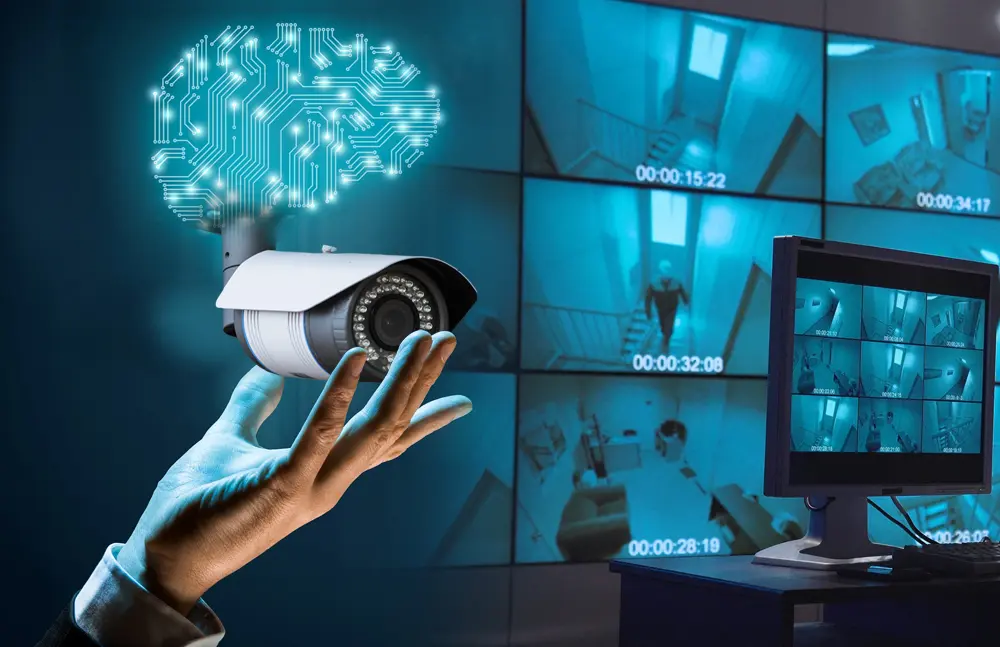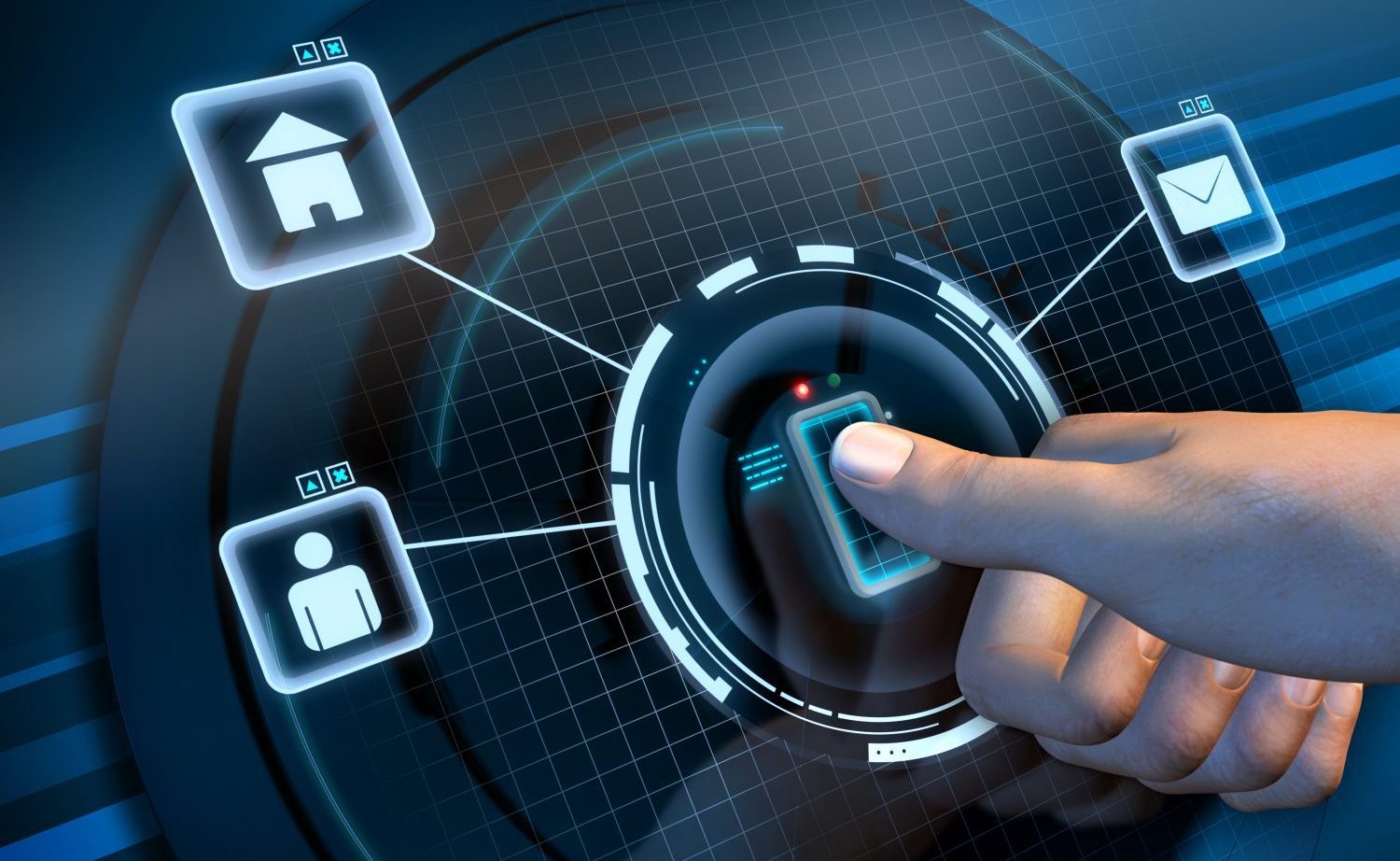ARTICLES
- HOME
- -
- ARTICLES
The Future of Surveillance Technology: Exploring the Latest Trends and Innovations
.png)
In today's rapidly evolving digital landscape, surveillance technology has become an integral part of our lives. From security cameras in public spaces to biometric identification systems, the capabilities of surveillance technologies have expanded significantly in recent years. As we delve into the future of this dynamic field, it's essential to understand the driving forces behind its evolution and the potential implications for society.
In this comprehensive article, we will explore the latest trends and innovations in surveillance technology, examining how advancements in artificial intelligence, the Internet of Things (IoT), and biometric identification are shaping the future of this industry. We will also discuss the critical privacy and ethical considerations that come with the increasing prevalence of surveillance technologies, and the potential impact on law enforcement and public safety.
Evolution of Surveillance Technology:
Surveillance technology has undergone a remarkable transformation over the past few decades. From the early days of analog CCTV cameras to the current era of digital, networked systems, the industry has witnessed a steady progression in both the sophistication and accessibility of surveillance tools.
The advent of digital cameras, coupled with the widespread adoption of the internet, has revolutionized the way we capture, store, and analyze surveillance data. Cloud-based storage solutions and powerful data processing capabilities have enabled the storage and analysis of vast amounts of video footage, leading to more efficient and effective monitoring of public spaces and private environments.
Current Trends in Surveillance Technology:
As we look towards the future, several key trends are shaping the surveillance technology landscape. These include:
-
Artificial Intelligence and Machine Learning: The integration of AI and machine learning algorithms into surveillance systems has significantly enhanced their capabilities. Facial recognition, object detection, and behavior analysis are just a few of the AI-powered features that are transforming the way we approach surveillance.
-
Internet of Things (IoT) and Surveillance: The proliferation of IoT devices, such as smart cameras, sensors, and connected home systems, has expanded the reach of surveillance technology. This interconnected web of devices collects and shares data, providing a more comprehensive view of the environments they monitor.
-
Biometric Surveillance Technologies: Advancements in biometric identification, including facial recognition, iris scanning, and fingerprint analysis, have revolutionized the way we authenticate and track individuals. These technologies are being increasingly adopted in various applications, from access control to law enforcement.
Artificial Intelligence and Machine Learning in Surveillance:
One of the most significant developments in surveillance technology is the integration of artificial intelligence (AI) and machine learning (ML) algorithms. These advanced technologies have transformed the way we analyze and interpret surveillance data, enabling more accurate and efficient monitoring of people, objects, and events.
AI-powered surveillance systems can perform tasks such as facial recognition, object detection, and behavior analysis with a high degree of accuracy. By leveraging deep learning models, these systems can quickly identify and track individuals, detect suspicious activities, and provide real-time alerts to security personnel. This level of automation and intelligence has the potential to revolutionize the way we approach security and public safety.
Moreover, the combination of AI and IoT devices has further expanded the capabilities of surveillance technology. Smart cameras and sensors equipped with AI-powered analytics can collect and process data in real-time, providing valuable insights and enabling proactive responses to potential threats or incidents.
Internet of Things (IoT) and Surveillance:
The rise of the Internet of Things (IoT) has had a profound impact on the surveillance industry. The proliferation of connected devices, such as smart cameras, sensors, and home automation systems, has created a vast network of data-gathering endpoints that can be leveraged for surveillance purposes.
IoT devices equipped with cameras, motion detectors, and other sensors can provide a comprehensive view of a given environment, capturing a wealth of data that can be analyzed and used for various security and monitoring applications. This interconnectivity allows for the integration of multiple data sources, enabling a more holistic understanding of the monitored area and the ability to detect patterns and anomalies more effectively.
Furthermore, the integration of IoT devices with cloud-based storage and processing solutions has made it easier to manage and analyze the vast amounts of data generated by these surveillance systems. This has led to the development of more advanced analytics and decision-making capabilities, empowering security professionals to respond to threats and incidents more efficiently.
Biometric Surveillance Technologies:
Biometric surveillance technologies, such as facial recognition, iris scanning, and fingerprint analysis, have become increasingly prevalent in recent years. These advanced identification methods offer a high degree of accuracy and reliability, making them valuable tools for security, access control, and law enforcement applications.
Facial recognition technology, in particular, has seen significant advancements, with the ability to identify individuals in real-time, even in crowded environments. This technology is being widely adopted in public spaces, transportation hubs, and private facilities to enhance security and streamline access control.
Iris scanning and fingerprint analysis are also gaining traction as biometric identification methods, offering an additional layer of security and personalization. These technologies can be integrated into various systems, such as access control, mobile devices, and even surveillance cameras, providing a more robust and secure means of authentication.
While the use of biometric surveillance technologies has numerous benefits, it has also raised concerns about privacy and civil liberties. The collection and storage of biometric data, as well as the potential for misuse or abuse, have become the subject of intense debate and scrutiny.
Privacy and Ethical Considerations in Surveillance:
As the capabilities of surveillance technology continue to expand, the need to address the ethical and privacy implications of these advancements has become increasingly important. The widespread use of surveillance systems, particularly those equipped with advanced AI and biometric identification capabilities, has raised concerns about the protection of individual privacy and the potential for abuse or misuse of the collected data.
One of the primary concerns is the lack of transparency and control over the collection, storage, and use of personal data. Individuals may feel that their right to privacy is being infringed upon, as they may not have a clear understanding of how their data is being used or who has access to it.
Additionally, the potential for surveillance technologies to be used for discriminatory or oppressive purposes, such as targeted monitoring of specific groups or individuals, has become a significant point of contention. The ethical implications of these technologies must be carefully considered to ensure that they are not used in a way that violates human rights or undermines democratic principles.
To address these concerns, policymakers, technology companies, and civil society organizations are working to develop robust privacy frameworks and ethical guidelines that can govern the use of surveillance technologies. This includes the implementation of data protection regulations, the establishment of transparency and accountability measures, and the development of ethical frameworks that prioritize the rights and well-being of individuals.
Advancements in Video Surveillance:
Video surveillance has been a cornerstone of the surveillance industry for decades, and it continues to evolve with the incorporation of new technologies and capabilities. The shift from analog to digital video systems has enabled the storage and analysis of vast amounts of video footage, revolutionizing the way we approach security and monitoring.
One of the key advancements in video surveillance is the integration of AI and machine learning algorithms. These technologies have enabled the development of sophisticated video analytics, which can detect and track individuals, identify suspicious behaviors, and provide real-time alerts to security personnel. This level of automation and intelligence has the potential to significantly enhance the effectiveness of video surveillance systems, allowing for more proactive and efficient monitoring of public spaces and private environments.
Moreover, the integration of video surveillance with other IoT devices, such as smart sensors and access control systems, has created a more comprehensive and interconnected security ecosystem. This integration allows for the correlation of data from multiple sources, providing a deeper understanding of the monitored environment and enabling more informed decision-making.
As video surveillance technology continues to evolve, we can expect to see further advancements in areas such as high-resolution imaging, low-light performance, and wireless connectivity, all of which will contribute to the overall effectiveness and versatility of these systems.
Future Possibilities and Innovations in Surveillance Technology:
As we look towards the future, the possibilities for innovation in the field of surveillance technology are vast and exciting. The continued advancements in AI, machine learning, and IoT technologies will likely drive the development of even more sophisticated and versatile surveillance systems.
One area of particular interest is the potential for predictive analytics and anomaly detection. By leveraging the power of AI and machine learning, surveillance systems may be able to identify patterns and anticipate potential threats or incidents before they occur, enabling a more proactive approach to security and public safety.
Additionally, the integration of surveillance technology with emerging technologies, such as autonomous vehicles and drones, could lead to the development of new and innovative monitoring solutions. These systems could provide a bird's-eye view of large areas, enhancing the ability to detect and respond to threats in real-time.
Furthermore, the increasing focus on sustainability and energy efficiency may also shape the future of surveillance technology. The development of low-power, energy-efficient surveillance systems could lead to the deployment of these technologies in a wider range of environments, including remote or off-grid locations, where traditional surveillance solutions may not be feasible.
As the field of surveillance technology continues to evolve, it will be crucial for policymakers, technology companies, and the public to work together to ensure that these advancements are implemented in a responsible and ethical manner, prioritizing the protection of individual privacy and civil liberties.
Conclusion:
The future of surveillance technology is a complex and multifaceted landscape, characterized by rapid advancements in AI, IoT, and biometric identification. As these technologies continue to evolve, they will undoubtedly have a profound impact on the way we approach security, public safety, and the protection of individual privacy.
While the benefits of these technologies are numerous, it is essential that we carefully consider the ethical and privacy implications of their use. By fostering a culture of transparency and accountability, and by developing robust regulatory frameworks, we can ensure that the power of surveillance technology is harnessed in a way that upholds the principles of a democratic society.
As we move forward, it will be crucial for all stakeholders – policymakers, technology companies, law enforcement, and the public – to engage in an ongoing dialogue and collaborate to shape the future of surveillance technology. Only by working together can we unlock the full potential of these advancements while safeguarding the rights and freedoms of individuals.
To stay up-to-date on the latest trends and innovations in surveillance technology, subscribe to our newsletter. You'll receive exclusive insights, industry updates, and expert analysis delivered straight to your inbox. Sign up now and be the first to know about the future of this dynamic field.






